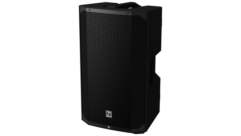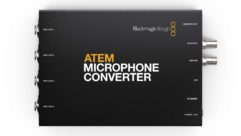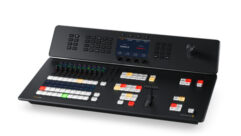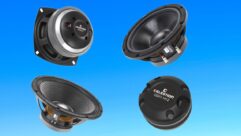
The Price of 3 DB
A 3 DB LEVEL INCREASE is a modest one. Subjectively, one might describe it as being a ?tweak? to the loudness of a system. Most infrared remote controls for home entertainment systems are about 1.5 dB per step, and most people who go to the trouble to pick one up and point it will change the level by at least two steps. Quit reading and go try it now….
At low levelsEfficiency and heatThe price per watt
A 3 DB LEVEL INCREASE is a modest one. Subjectively, one might describe it as being a “tweak” to the loudness of a system. Most infrared remote controls for home entertainment systems are about 1.5 dB per step, and most people who go to the trouble to pick one up and point it will change the level by at least two steps. Quit reading and go try it now….
At low playback levels, a 3 dB change can be made without regard for its effect on the audio system’s components. The loudspeaker is likely operating well below its thermal limits, so any increase in heat is insignificant. Also, the amplifier is likely operating far below its clipping point, so the loudness can be increased without undue concern regarding distortion.
The logical way to increase the level of a sound system is to start low and slowly advance the level control until the desired level is attained. Most experienced sound people do this by instinct, and they know when to stop.
Because level increases come so easily initially, it’s easy to forget that a 3 dB level increase exacts an increasingly greater toll in terms of system headroom and loudspeaker heat dissipation.
Loudspeakers are notoriously inefficient. More than 95 percent of the applied power is wasted as heat, which increases the operating temperature of the loudspeaker, rather than converted into sound. If you turn it up 3 dB, it will get a little louder and run hotter.
The loudness increase is logarithmic — twice the applied power always produces the same 3 dB loudness increase. The temperature increase is linear — each additional watt has the same heating effect. So, if you double the power from 1 W to 2 W, and then from 2 W to 4 W, the loudness will change by 3 dB. But, there will be a larger temperature increase from the second power change, even though it was proportionally the same as the first one. As level is increased in equal loudness increments, the temperature increments get progressively larger with each increase.
Let’s say that you’re amplifier shopping, and paying one dollar per watt for amplifier power. Loudspeaker sensitivity ratings are usually referenced to 1 watt (actually 2.83 Vrms, but that’s s a subject for another column). Let’s start there and go up. The power must be doubled to 2 watts for a 3 dB level increase. Four watts gives another 3 dB, and 8 watts yet another. The level increases are relatively inexpensive, and it appears that the sky is the limit regarding the potential loudness of the system. But if you look at the trend, you’ll see that you’ll soon run out of money. Every 3 dB increase is twice the cost of the previous. Eventually you won’t be able to afford another 3 dB!
If 3 dB is just noticeable, 6 dB can be considered the smallest “loudness upgrade” worth pursuing. A 6 dB increase represents twice the voltage across the loudspeaker, which quadruples the power that must be dissipated as heat.
Here are some real-world examples of the expected cost of a 6 dB upgrade for different types of sound systems. In each case, I’m assuming that only the amplifiers are being upgraded, and that the existing loudspeaker system will be used.
- Paging system in a small office: 30 W amplifier to 120 W amplifier — about $100
- Medium-sized portable PA system: 100 W amplifier to 400 W amplifier — about $300
- Typical playback system for weekend rock band: 1,000 W to 4 kW — about $3,000
- Large house of worship system: 20 kW to 80 kW — about $60,000
- Touring system: 50 kW to 200 kW — about $150,000 (and three more trucks)
Note that in each example the same loudness increase (6 dB) was achieved, but at a vastly different cost. Now consider the owner of the medium-sized portable PA system that runs sound at the large house of worship. The relatively low-cost upgrade to the smaller system translates into a major investment in the large one. It’s all about “proportional change.” What you need depends on what you start with. This is why experienced audio people use the decibel system to rate and select audio components — the logarithmic relationships are built-in.
The Price of 3 DB
A 3 DB LEVEL INCREASE is a modest one. Subjectively, one might describe it as being a ?tweak? to the loudness of a system. Most infrared remote controls for home entertainment systems are about 1.5 dB per step, and most people who go to the trouble to pick one up and point it will change the level by at least two steps. Quit reading and go try it now….
Destined for failurePower vs. voltage
A loudspeaker will eventually succumb to that “next 3 dB.” It doesn’t sound like much, and it came so easy at lower levels. But eventually heat takes its toll and failure occurs. When a loudspeaker is power tested, once its response changes by a few dB due to heat, it’s very close to its thermal limits. You can’t expect another 3 dB. Level is very deceptive. You many only want “a little more,” but at some point a slight increase produces distortion or component failure due to the logarithmic increase in power.
We hear about “the straw that broke the camel’s back.” But in this case, we’re doubling the number of straws each time we add to the camel’s load. If he’s showing signs of fatigue, it isn’t advisable to keep piling it on. It’s better to add a second camel.
The moral of the story? Don’t load your camel logarithmically! Yet that’s exactly what happens each time you turn up a loudspeaker by 3 dB.
The truth is that amplifiers seldom run out of power. They’re rated using sine waves — a signal that has a much higher RMS voltage (and therefore generates much more power) than typical audio program material. Instead, they run out of voltage swing. When normal program material lights the clip indicator on an amplifier, it’s likely at one-tenth or less of its rated sine wave power output. Further level increases produce more severe clipping, and the amplifier power output continues to rise, escalating toward the sine wave power production reflected by its power rating. An inexperienced system operator will often turn the sound level up so much that the amplifier clips. They want it louder yet, so they continue upward with the volume control. Because the amplifier is out of headroom, each 3 dB increase clips the signal more severely. The power output of this amplifier is going up, even though it’s heavily distorted.
It takes an amplifier rated at about 100 watts to produce 10 “clean” watts into a loudspeaker. Likewise, it takes an amplifier rated at about 1,000 watts to produce 100 “clean” watts into a loudspeaker. Peak limiters can allow an amplifier to play louder by reducing the program peaks and allowing the amplifier to generate a higher RMS voltage across the loudspeaker. While the fidelity may suffer, the sound definitely gets louder, and the voice coils definitely get hotter.
A system’s ability to go 3 dB louder diminishes with increased level. Eventually the next 3 dB will max out a system component, causing amplifier clipping, thermal failure of the loudspeaker, or both.
The bottom line? At some point, a sound system simply can’t go “a little louder.” A perfectly reasonable request for a slight loudness increase at low playback levels can be an absurd request at high playback levels. If you ignore the warning indicators, something will fail. A sound system that’s operating at “half power” is nearly all the way up.
Pat Brown is president of Synergetic Audio Concepts (Syn-Aud-Con) Inc. and Electro-Acoustic Testing Company (ETC) Inc. Syn-Aud-Con conducts training seminars in audio and acoustics worldwide for those who operate, install, and design sound reinforcement systems. ETC Inc. performs precision loudspeaker testing for the audio industry. He can be reached at [email protected].










